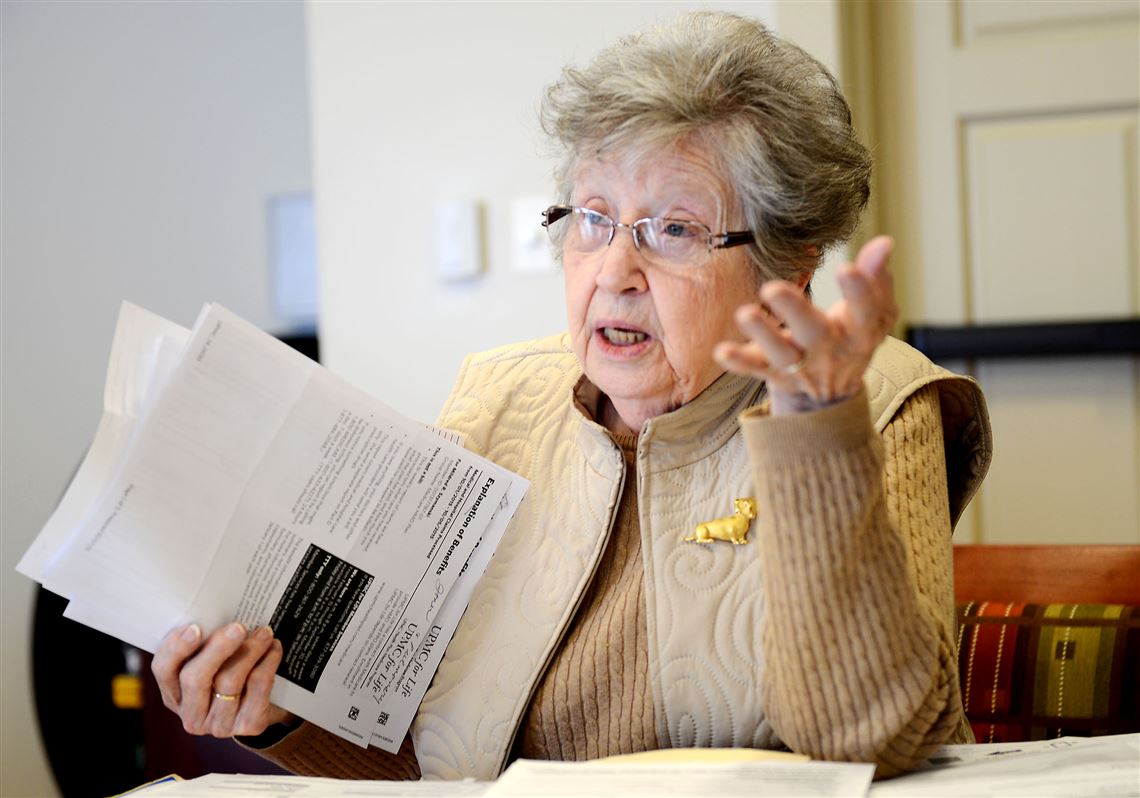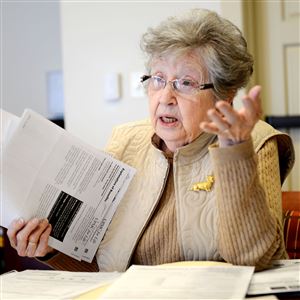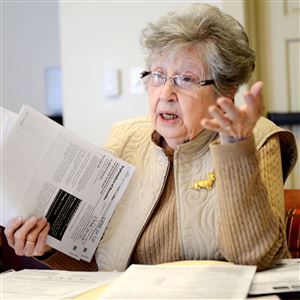Millie Szymanski, a Mars retiree who saw the charge for an antibacterial medication to treat her ear infection more than quadruple in eight months, has lost her appeal before an administrative law judge to reduce the doctor’s bill.
But she was still left wondering: How does the line item charge for a drug infusion administered in the same doctor’s office go from $3,400 to $15,000 in eight months when the manufacturer has not raised the drug’s price?
The most notable change for Ms. Szymanski during that period was the switch for her Medicare Advantage coverage from Highmark to UPMC for Life HMO Rx at the beginning of 2015.
Because of patient privacy regulations, UPMC and the doctor’s office, Romano and Pontzer in McCandless, cannot comment on a specific patient’s coverage.
But Chronis Manolis, vice president for pharmacy services for UPMC Health Plan, said a provider’s listed charge “is just a reference point” and is not the determining factor for what the insurer will pay.
Documents supplied by Ms. Szymanski show that her UPMC insurance plan paid the physician practice $5,095.80 for three units of Dalvance administered over two visits last July. That breaks down to $1,698.60 per unit. By comparison, the website Goodrx.com lists prices for Dalvance ranging from $1,492 to $1,572 per unit at various pharmacies.
Because the medication was administered via IV in a physician’s office, it is covered under Medicare Part B, which holds the beneficiary responsible for 20 percent of the approved Medicare payment rate. In this case, her outstanding bill is $1,019.16.
What didn’t make sense for Ms. Szymanski was that, under her Highmark plan, the doctors had listed a $3,400 charge for the Dalvance infusion the previous December and she’d only been responsible for a $35 copayment.
Mr. Manolis said while benefits will vary from plan to plan, patients also can be surprised by higher-than-expected bills if they don’t track where they are in terms of their yearly deductibles or annual out-of-pocket expense maximums, which can result in deceptively low bills for treatment near year’s end.
As another example, he cited the Part D prescription drug “doughnut hole,” where beneficiaries reach the end of the basic benefit and must pay a larger share of their drug costs until they reach the catastrophic coverage threshold.
“You could be paying $10 for a drug then one day you’re paying $100 because you’re in the doughnut hole,” he said.
UPMC Health Plan spokeswoman Gina Pferdehirt said Thursday they “have made a good faith effort to help clarify the issue of billing, drug pricing and plan design” for their members. “We encourage all people to educate themselves and for members to call us to help them with any questions.”
Now that Ms. Szymanski’s appeal has been denied, she’s hoping to reach some settlement with the doctors “but only if it’s affordable to me.”
Last week, Ms. Szymanski, 86, moved into a smaller, less expensive apartment at her senior living facility to keep from going deeper into her savings each month. Meanwhile, the MRSA infection in her ear has returned and she’s scheduled to see an ear, nose and throat specialist next week.
Like many seniors, she worries about health problems consuming all of her savings. “I’m older than my car, and my car’s having problems,” she joked.
In hindsight, she wishes she had asked more questions about costs before undergoing the treatment last year. But after making only a $35 co-payment for the same treatment eight months earlier, she assumed she could handle the bill and she wanted to restore hearing in her only good ear.
“I’m going to ask questions with every doctor I go to now,” she said.
Steve Twedt: stwedt@post-gazette.com or 412-263-1963.
First Published: May 13, 2016, 4:00 a.m.



















